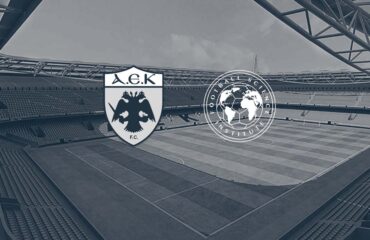Small-Sided Games in Elite Football: Practical Solutions to Replicate the 4-min Match-Derived Maximal Intensities.
Riboli A, Esposito F, Coratella G.
J Strength Cond Res. 2022 Mar 23. doi: 10.1519/JSC.0000000000004249.
This study observed 20 professional football players during Small Sided Games SSGs with (SSGwith) or without (SSGwithout) goalkeepers, both lasting 4-min. The Area per Player ApP to replicate 4-minPeak match demands in terms of relative (m·min-1) total, high-speed, very high-speed, sprint, and acceleration/deceleration distances was larger than that to mimic 90-min average demands, and higher for SSGwith than SSGwithout.
Injury risk is greater in physically mature versus biologically younger male soccer players from academies in different countries.
Hall ECR, Larruskain J, Gil SM, Lekue JA, Baumert P, Rienzi E, Moreno S, Tannure M, Murtagh CF, Ade JD, Squires P, Orme P, Anderson L, Whitworth-Turner CM, Morton JP, Drust B, Williams AG, Erskine RM.
Phys Ther Sport. 2022 Mar 17;55:111-118. doi: 10.1016/j.ptsp.2022.03.006. Online ahead of print.
This prospective cohort surveillance study in 501 players (aged 9-23 years) from eight academies in England, Spain, Uruguay and Brazil found that injury patterns were similar between players post-peak height velocity (PHV) and adult players, but, crucially, relatively more of these players suffered injuries compared to pre- and circa-PHV (except growth-related injuries).
Post-Match Recovery in Soccer with Far-Infrared Emitting Ceramic Material or Cold-Water Immersion.
Coelho TM, Nunes RFH, Nakamura FY, Duffield R, Serpa MC, da Silva JF, Carminatt LJ, Cidral-Filho FJ, Goldim MP, Mathias K, Petronilho F, Martins DF, Guglielmo LGA.
J Sports Sci Med. 2021 Oct 1;20(4):732-742. doi: 10.52082/jssm.2021.732. eCollection 2021 Dec.
This study in 25 university-level soccer players found that neither Bioceramic nor cold water immersion interventions improved post-match recovery of the altered parameters superoxide dismutase SOD, thiobarbituric acid reactive species TBARS, CK, LDH, quadriceps and hamstring DOMS, as well as the decreases in 20-m, SJ, CMJ, and perceived recovery scale PRS.
Strength and Biomechanical Risk Factors for Non-contact ACL Injury in Elite Female Footballers: A Prospective Study.
Collings TJ, Diamond LE, Barrett RS, Timmins RG, Hickey JT, du Moulin WS, Williams MD, Beerworth KA, Bourne MN.
Med Sci Sports Exerc. 2022 Mar 12. doi: 10.1249/MSS.0000000000002908. Online ahead of print.
This study in 322 elite senior and junior female Australian Rules Football and Soccer players during the 2019 season found that prior ACL injury, and a pre-season lower isometric hip adductor to abductor strength ratio, greater CMJ peak take-off, and greater single-leg triple vertical hop average dynamic knee valgus and ipsilateral trunk flexion were independently associated with increased risk for subsequent ACL injury during the season.
A longitudinal analysis of technical-tactical and physical performance of the teams in the Spanish LaLiga Santander: An eight-season study.
Errekagorri I, Castellano J, Echeazarra I, López-Del Campo R, Resta R.
Biol Sport. 2022 Mar;39(2):389-396. doi: 10.5114/biolsport.2022.105331. Epub 2021 Apr 21.
This study on the way teams played for the eight seasons 2011-12 to 2018-19 in the Spanish Football First Division (Spanish LaLiga Santander) found that the number of passes and team width showed a stable trend as the seasons passed. Nevertheless, the number of shots, crosses and corners, total distance covered, team length and distance from the goalkeeper to their defence showed a descending trend. The main conclusion was that even the teams keep on being characterized by an indirect style of play, the trend in the evolution of the game is that defence is put before attack.
No sport for old players. A longitudinal study of aging effects on match performance in elite soccer.
Rey E, Lorenzo-Martínez M, López-Del Campo R, Resta R, Lago-Peñas C.
This study in 154 players who competed in the Spanish first division (LaLiga) between the 2012-13 and 2019-20 seasons found that soccer players decreased by an average of 0.56% their total distance covered in matches for each year that they got older. Similarly, the number of high-intensity efforts and distance covered at high-intensity running decreased by 1.80% and 1.42% per year, respectively; however, players significantly increased their pass accuracy by an average of 0.25% each year that they got older. The detrimental effect of age on total distance and high-intensity running was greater for external defenders, external midfielders, and forwards; and the positive effect of age on pass accuracy was greater for central defenders and central midfielders. Players can annually improve their technical-tactical skills with increasing age as a possible compensation mechanism against physical performance declines related to aging.






You must be logged in to post a comment.